Here’s a list of Japanese trees you should know about. Check it out!
rom delicate cherry blossoms to vibrant autumn foliage, Japan’s trees hold a special place in culture and landscape. Explore 14 iconic trees, their captivating beauty, and the significance they hold in
Page Contents
What role do trees play in the Japanese culture?
Plants and flowers hold a very important place in Japanese culture. Many of them symbolize health, strength, longevity, and so on. Some are even modified and used as family crests.
Some trees hold a lot of significance during the holidays, like ‘matsu’ or pine trees and ‘take’ or bamboo. Branches of these two trees go into making ‘kadomatsu’ which is a traditional Japanese decoration used during New Years celebration in Japan.

Trees like ‘sugi’ or Japanese cedar is worshipped as part of Japanese traditions. These evergreen trees are believed to represent longevity and power that is associated with the powerful samurai clans.
There are many folklores about sacred trees that are passed down through many generations. It is believed that trees are home to kami and the spirits of nature.
The Japanese have always had profound adoration and respect for all aspects of nature.
This has led them to coexist with nature peacefully. Like other aspects of nature, trees also play a role in Japanese values and traditions.
List of Japanese Trees Names
There are a number of trees native to Japan, spread across the country’s many islands. Here is a list of the most popular Japanese trees.
Katsura Tree (Cercidiphyllum)
The Katsura Tree, scientifically known as Cercidiphyllum, is a beloved and distinct species of tree in Japan, renowned for its captivating and unique aroma.
This tree is native to much of the temperate regions of Japan, China, and Korea and is known for its bright leaves and ornamental presence which commands attention and admiration.
The Katsura tree is a deciduous tree that can grow up to a height of 30 meters with a trunk diameter of up to one meter. Its delicate foliage, which is comprised of broad, oval-shaped leaves, has made it popular with landscapers.
These leaves come in a variety of colors, from green and yellow to a lovely reddish-orange, and give a stunning translucent effect when the light filters through them.
The most charming feature of the Katsura tree is undoubtedly its stunning and sweetly sweet aroma when the leaves are touched or rub together.
This captivating aroma is also produced when the tree is burning and is often used by Japanese culture to create incense.
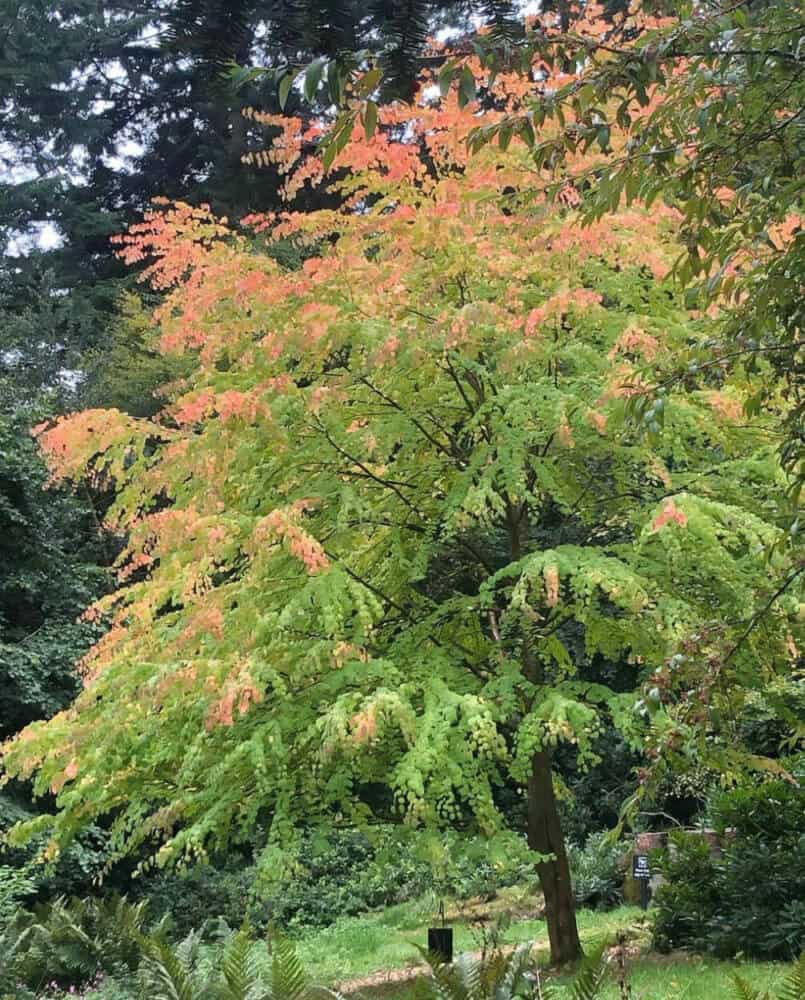
One of the greatest challenges of successfully caring for a Katsura tree is keeping the tree adequately hydrated in order to prevent its leaves from wilting and drooping.
The Katsura tree enjoys moist and well-drained soil and is temperamental to the harshness of the sun, so must be protected from the scorching heat to allow it to thrive.
Japanese Beech
The Japanese beech (Fagus crenata) is a majestic tree, and an integral part of the Japanese landscape. Most often found in Japan’s cool, temperate climates, the Japanese beech boasts a beautiful canopy of broad green leaves and a silvery-gray bark which gives it an air of elegance and grandeur.
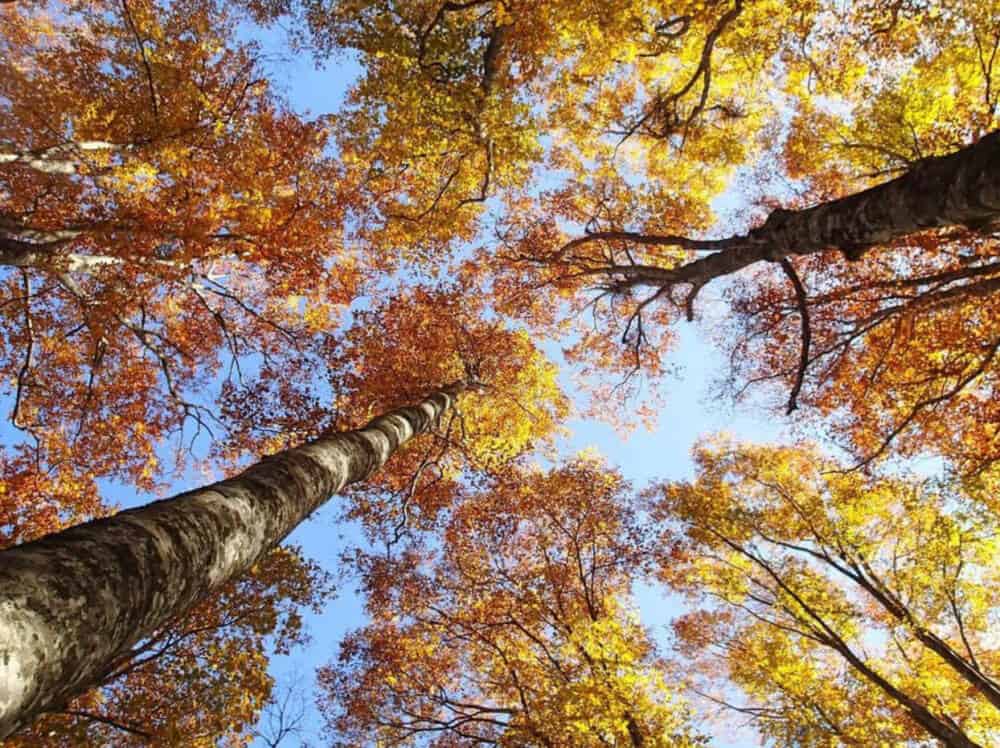
The Japanese beech is an evergreen tree, meaning it is an evergreen species that retains its foliage throughout the year.
Typically growing from 15 to 25 meters tall, the Japanese beech boasts a dense and wide dome shaped crown and displays a unique pattern of bark that is both dimpled and uneven.
Unlike other beech tree varieties, the leaves of the Japanese beech are oval and a dark glossy green, with their bases and tips having a slightly wavy margin.
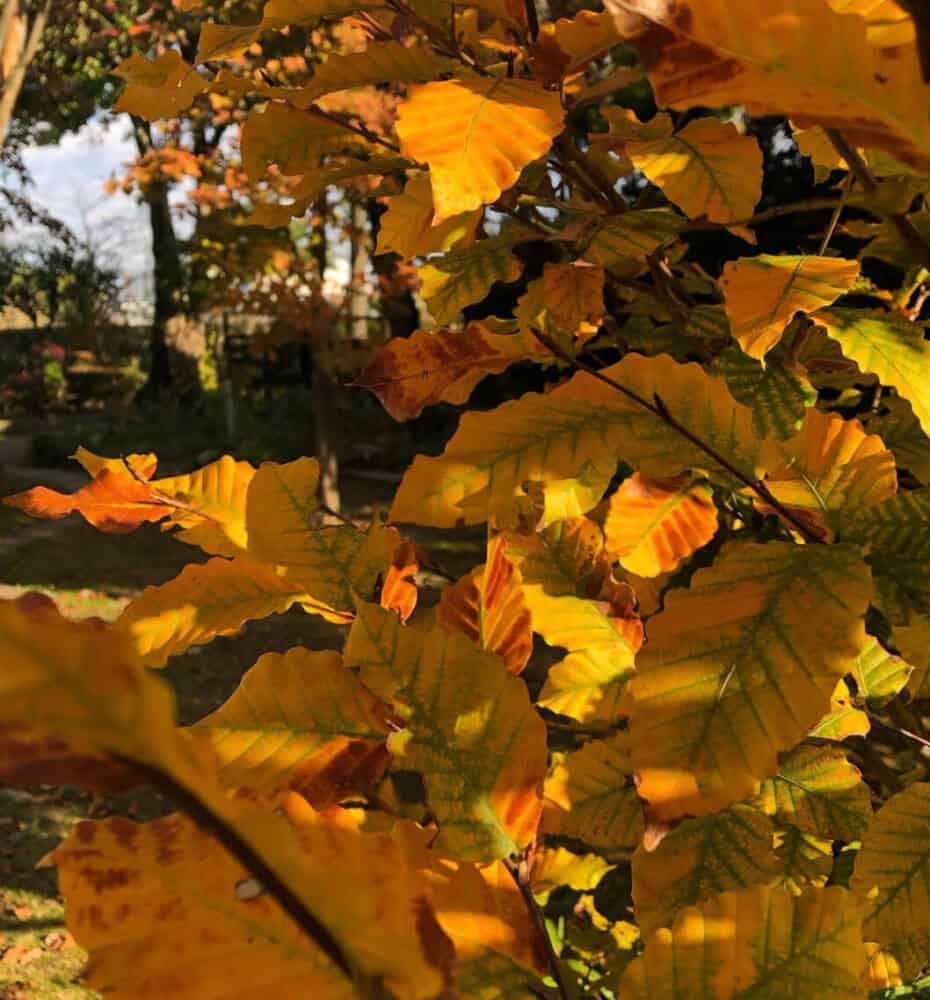
The Japanese Beech is a hardy tree, but it is also incredibly long-lived and can reach up to a majestic 400 years of life.
Plus, it is a fast-growing species and will reach maturity in about 25 years, making it a popular choice for home or commercial landscaping purposes.
The flowering season of the Japanese beech is April to May, when the beech produces rust-colored catkins of male and female flowers. These catkins will eventually produce small nut-like fruits which contain several triangular-shaped nuts.
The Japanese beech has traditionally been used to make furniture, cabinetry, and wooden sculptures. Its strength, durability and aesthetic beauty make it a popular choice for artists, carpenters and furniture makers.
It is considered a high quality and valuable material, so it tends to be expensive.
Japanese Stone Pine (Pinus pumila)
The Japanese Stone Pine, or Pinus pumila, is a beautifully statuesque tree with a fascinating history and an interesting place in the culture of Japan.
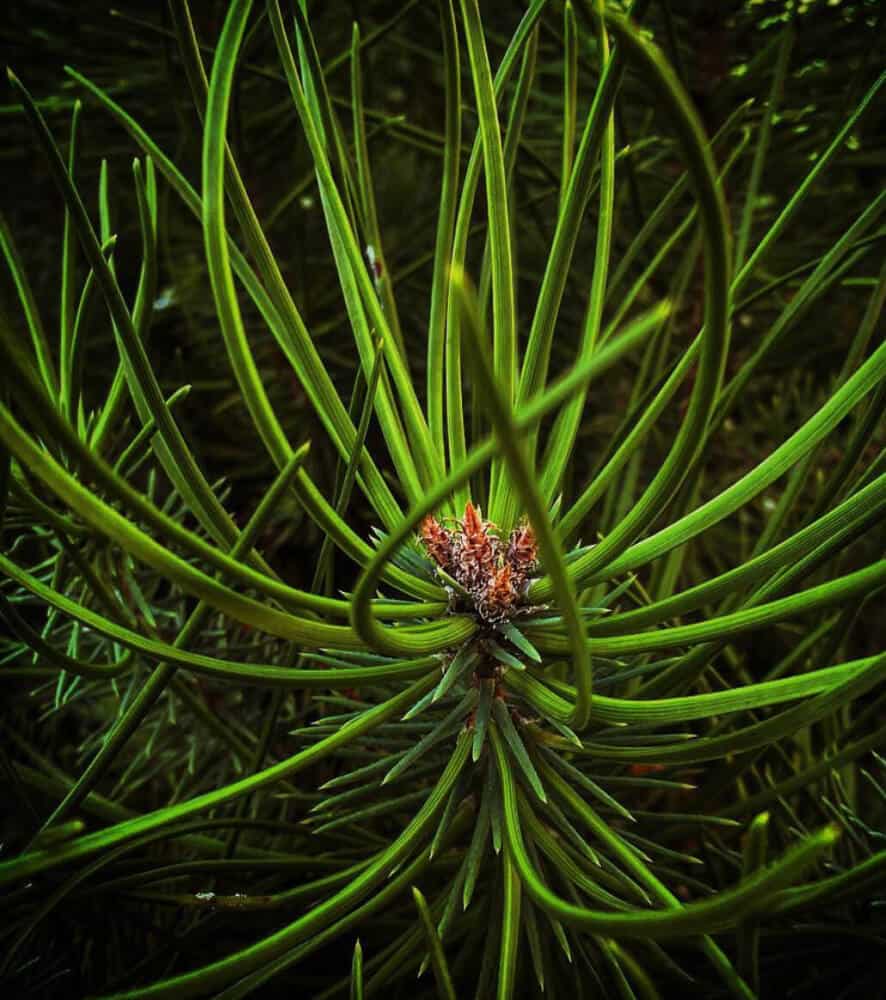
It grows in the mountainous regions of Japan and is renowned for its strong and resolute spirit. It is well-known for its unique texture and its distinctive growth pattern, with short, twisted needles and twisted branches.
Native to the Japanese archipelago and often referred to as the Japanese Dwarf Pine, Japanese Stone Pine is an evergreen tree that can grow up to eight meters in height.
When compared to other pines, it’s particularly well-adapted to life in the mountains, where it can live for several hundred years in a very cold, harsh environment.
It’s slow-growing, often only growing around a quarter of an inch annually, and is most easily identified by its small leaves, two of which grow together at each node.
The resolute strength of the Japanese Stone Pine has found its way into literature and art in Japan.
Celebrated for its strength and ability to persevere in even the harshest of climates, the Japanese Stone Pine often appears in Japanese art, often with antique characters on its trunks or perched atop the tree.
In Japanese literature, the Japanese Stone Pine is seen as a symbol of tenacity, of the strongness that comes with a seemingly frail form; a harkening to resiliency and the ability to survive in challenging conditions.
When in bloom, the Japanese Stone Pine has bright yellow flowers with yellow-orange anthers. It also has small, dark brown cones that are about one and a half inches long.
It’s also important to note that because the bark of the Japanese Stone Pine is very thin, it is extremely vulnerable to fire, so caution should be taken when planting this tree in a fire-prone area.
Many times, the Japanese Stone Pine makes an excellent landscape feature due to its strength and resilience.
With its slow growth, it can withstand even the harshest of weather conditions, and its unique foliage is sure to turn some heads.
It’s important to note that this tree is not well-suited to many climates and can be difficult to maintain, so be sure to properly research the local climate before planting this tree.
Azalea
The azalea is an iconic symbol of Japan’s natural landscapes. Growing widely across the country, they appear during late winter to early spring, bringing a sense of joy and beauty that only nature can provide.

Renowned for their fragrant petals of white, pinks and reds, azaleas have been replanted and celebrated for centuries, from residential gardens to royal parks.
For the Japanese, the Azalea symbolizes good luck and fortune, making the blooms a popular gift for both aesthetic and symbolistic value.
Furthermore, Azaleas are connected with the subtle mood of was, or harmonization and tranquility that served as the foundation of Japanese culture.
The flowers evoke a feeling of refinement and serenity, providing a perfect ambience for meditation and spiritual connection.
Azaleas are difficult plants to maintain, and yet they are very rewarding in the beauty and sweet scent they provide.
Since the plants do not tolerate extremes of temperature, the best environment for azaleas is a location with daytime temperatures ranging from 65-80F (18-27C), and nighttime temperatures ranging from 55-65F (13-18C).
They prefer light soils, excellent drainage, and slightly acidic environments, as well as optimal humidity.
The blooms come in various shapes and sizes, with single blooms, doubles, and semi-doubles, and with petal color schemes ranging from white and light pink, to red and hot pink.
Furthermore, there are hybrid azaleas, which have an extended season of bloom. If one is fortunate, one may even come across the elusive semi-dwarf azalea of the Ilam variety, with petals of white and pink that form into a conical shape.
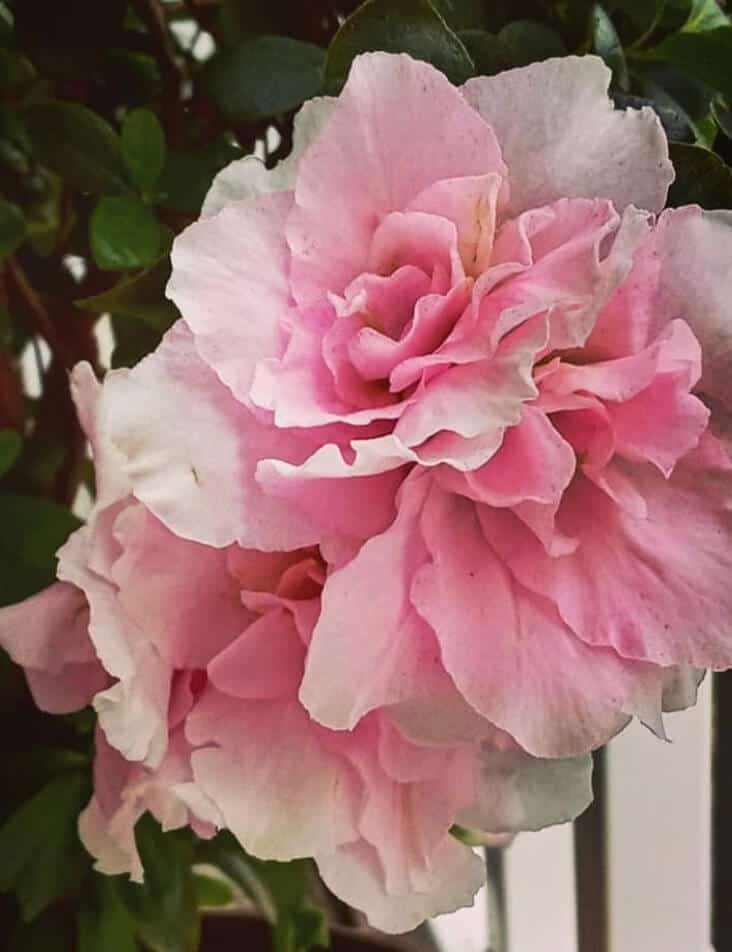
The blossoms of azaleas add beauty and meaning to the landscape, be it in a public garden or in one’s own backyard.
For the traditional gardener, there is no more iconic symbol of Japan than the azalea, with its bright colors and unique shape. Like all of nature’s bounties, the azalea brings beauty, joy, and harmony to anyone who appreciates her.
Chrysanthemum
The Chrysanthemum tree, scientifically known as Chrysanthemoides Monilifera, is a species of flowering shrub native to the eastern part of South Africa. With its graceful and delicately beautiful blossoms, it’s no wonder why this tree is a popular choice for landscape design in Japan.
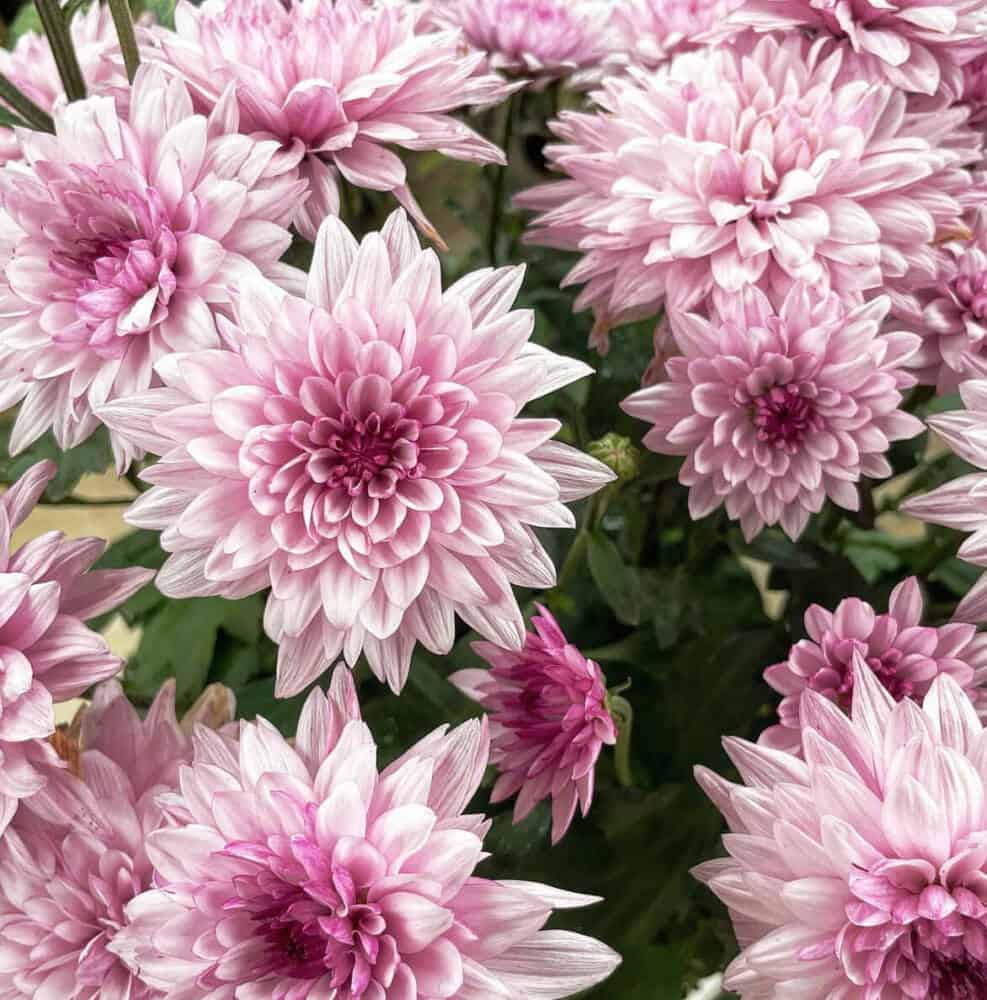
In Japan, Chrysanthemum trees are evergreen, meaning they stay in bloom all year round, from the vibrant blooms in spring to the subtle, almost salty scent in the summertime. Its stunning feature is the clusters of tiny star-like white, pink, yellow, or purple flowers that appear with the new growth of spring.
In the Autumn, Chrysanthemum trees look stunningly beautiful with their vivid yellow and golden leaves, a sight that inspires many artists and capture the essence of changing seasonal beauty.
The Chrysanthemum flower is a powerful symbol of Japanese culture and is used in many important ceremonies and festivals.
Generally, the blooms of the Chrysanthemum tree symbolize modesty, beauty, and joy, depending on the color and nature of the individual flower.
During the Chrysanthemum Festival, people gather to admire the beauty and artistry of the Chrysanthemum trees.
Chrysanthemum trees are not just popular for their flowers and leaves. They are also known for their ease of care and are quite easy to maintain in the garden.
They’re highly tolerant to most soil types and require little pruning, which means they can flourish and grow fairly well on their own.
Overall, the Chrysanthemum trees are a superb choice for Japan’s gardens and landscapes.
The broad and beautiful blooms can fill any outdoor space with charm and grace, and their autumn leaves display a stunning golden hue, a faint reminder of Japan’s breathtaking seasonal changes. The Chrysanthemum tree is truly a living piece of art.
Okinawa Pine
The Okinawa pine is a beloved species in Japan and a common sight throughout the country.
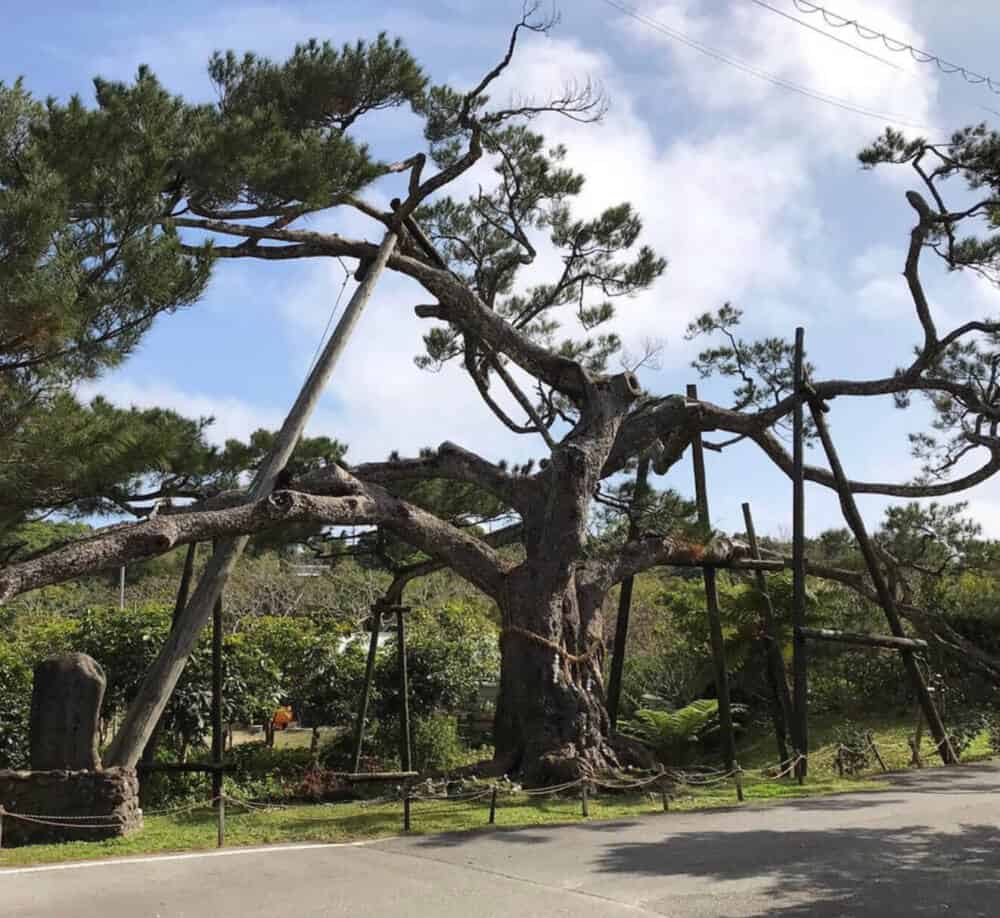
It’s a hardy tree, able to withstand some of the harshest climates imaginable, adapting to more temperate climes as it ages. It can even thrive in exposed coastal areas, making it a great addition to any landscape.
Characterized by its spiraling branches, the bark of an Okinawa pine tree is a smooth, reddish-brown color and can reach heights of up to 25 meters.
Its dark green foliage is shaped into bundles consisting of five needles, with a smooth and glossy texture. Often described as feather-like, it is augmented by tight petals of resin-filled cones which give off a unique scent.
The Okinawa pine is a common sight in many of the shrines and temples of Japan. Its broad sturdy shape is a symbol of longevity and good luck for worshippers, and its branches are used for making kagura rituals.
Aesthetically, the Okinawa pine is a stunning sight. Its long evergreen needles make a majestic silhouette when lit up from behind which gives the illusion of a shimmering curtain, making it an ideal tree for lighting up during special events like festivals.
Despite its robustness, the Okinawa pine is a delicate tree that requires special attention.
As they grow and mature, they benefit from having their deadwood branches cleared out and pruned on occasion.
Be careful not to go overboard as this can cause undue stress on the tree. Additionally, the Okinawa pine prefers alkaline soil and regular doses of fertilizer, making it crucial to check the pH levels in your garden.
The Okinawa pine is a magnificent species of tree that has become a beloved sight throughout much of Japan.
Their majestic resilience and sturdy shape make them the perfect symbol of steadfastness and courage, a reminder of why it has withstood the test of time.
Pair it with complimentary plants of a similar nature and your garden will soon become an oasis of serenity and tranquility.
Hinoki Cypress
The Hinoki Cypress is a beautiful conifer native to Japan. For centuries, it has been prized for its fragrant, graceful foliage and its cultural significance.
Whether you want to add beauty to your garden or pay homage to its cultural significance, the Hinoki Cypress is a perfect choice.
The Hinoki Cypress is a medium-sized evergreen tree with two main varieties. The first, Chamaecyparis obtusa, has soft, feathery foliage that ranges in color from bluish-green to yellowish-green.
The densely growing leaves create the tree’s conical shape, making it an ideal addition to any garden setting.
The second variety, Chamaecyparis formosana, is more densely foliated and has a more fibrous foliage. Its colors range from bright yellow-green to dark green.
It is not only prized for its beauty, however. Hinoki Cypresses are traditionally used in Shinto rituals, and many festivals make use of this symbol. It is also said to bring good luck and protection.
From grand, Buddhist temples to private homes, the Hinoki Cypress is often planted to add spiritual significance, grace, and beauty to the landscape.
Its fragrant aroma can also be a pleasant addition to your landscape. When crushed, the foliage releases a unique, sweet scent that some compare to citrus, while others describe it as a piney, camphor-like fragrance.
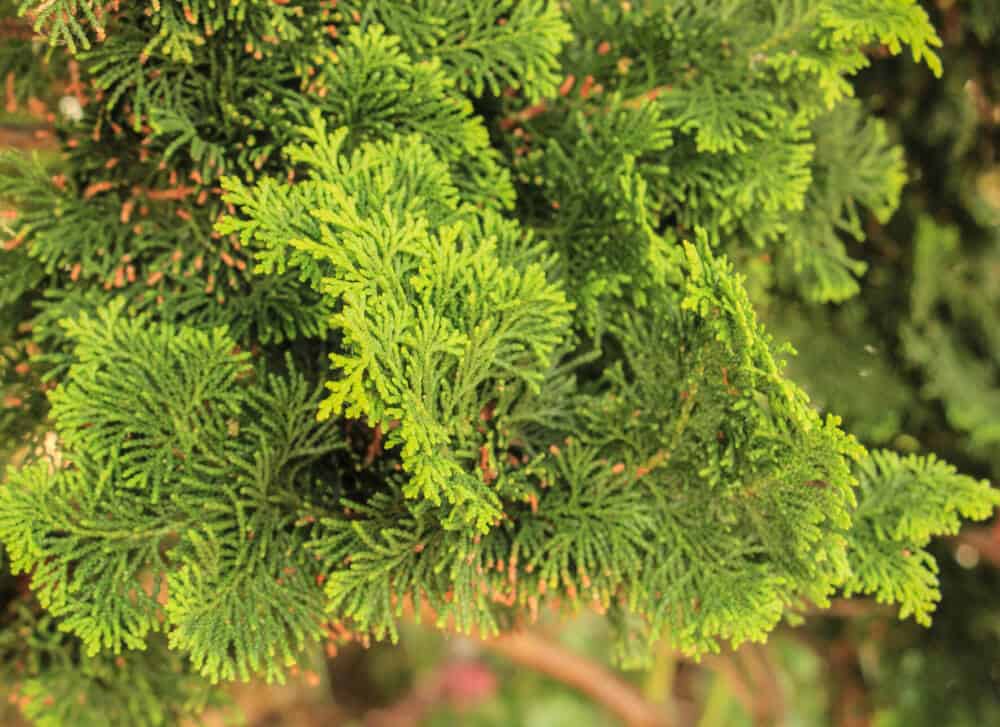
Planting a Hinoki Cypress near pathways or fountains can release a delectable scent throughout your garden, drawing admiration and enrapturing your senses.
When it comes to caring for this specimen, there are some general tips. Hinoki Cypress can tolerate a variety of climates, ranging from hot summers to cold winters.
It can do well in different soils, though it prefers moist, well-draining soil. Regular watering is a must, and the tree should be fertilized each spring to keep it healthy.
Pruning and shaping can enhance the tree’s shape and beauty, and it should be done after the new growth has appeared.
Admirers of all things natural and beautiful should consider adding a Hinoki Cypress to their landscape.
Its fragrant foliage, spiritual significance, and striking shape bring an incomparable grace to any garden. Adding a Hinoki Cypress is sure to put a bit of magical wonder into your life.
Konara
Konara are some of the most spectacular trees found in Japan. Bold and beautiful, their bright red foliage is sure to make an impression on anyone who takes the time to appreciate them.
Whether your preference is for the eye-catching full foliage of a mature Konara or for the soft oranges and yellows of the newest spring season growth, these trees make for an unforgettable sight in any Japanese landscape.
For those with an appreciation for nature, Konara are an ideal choice. They vary in size, growing at a medium to large size and bearing both branches and leaves with a dense canopy once fully grown.
Although they prefer climates with higher humidity and more shade, they can adapt to a wide range of conditions, and can even do well in harsher climates that are prone to extreme temperatures.
With their foliage of bright oranges, reds, and yellows, Konara are quite striking. The bark of the tree may be white or grey, and some even have a beautiful golden hue.
The evergreen leaves of the tree are thick and leathery, and can remain vibrant during the winter months.
Depending on the variety, Konara will also produce flowers around mid-summer.
The petals range from bright yellow to orange depending on the season, making them a beautiful addition to any garden.
If you’re looking for a centerpiece for your garden, this tree is an ideal choice.
In addition to their beauty, Konara make for excellent wind protection. The thick foliage creates a natural barrier against strong winds, making them great for planting near busy streets or other windy areas.
Konara are also great for attracting wildlife as many birds enjoy nesting and feasting on the tree’s sweet nectar.
Their dense foliage also provides blanket coverage for any animals that may be using the tree for a home, including various kinds of small mammals.
If you’re looking for a beautiful tree with a long lifespan and plenty of environmental benefits, then the Konara is the tree for you.
With its breathtaking foliage and impressive size, this tree is an ideal choice for any landscape.
Sakaki Evergreen
The sakaki evergreen is a beautiful and elegant tree found in the forests and gardens of Japan.
Its lush, green foliage offers a stylish, calming presence all year round, while its white flowers add a cheerful brightness and beauty to any garden during the spring months, making sakaki a popular choice of plants for many gardeners.
The sakaki tree is also prized for its hardiness and resilience, growing back strong and vibrant even after experiencing weather damage or other outside influences.
Its graceful branches support a rich canopy of bright green leaves and cone-shaped sprays of small, white flowers in the spring, which eventually develop into clusters of small black berries.
This evergreen has a wonderful, graceful form, and its leaves and flowers create a pleasing shape when viewed from a distance.
The sakaki tree grows anywhere from fifteen to forty feet in height with a spread of up to twenty-five feet, and its graceful branches stretch out in an elegant, oval shape. Its trunk is slender, with reddish bark that adds a further splash of color to any garden.
If it’s cared for properly, the sakaki evergreen can outlive many other plants, often remaining in gardens and landscapes for generations as a part of the family history of the home.
Like many other Types of trees, the sakaki tree requires special attention, such as pruning and regular trimming, to keep its beautiful shape and symmetry in tact. With the correct care and attention, the sakaki tree can provide a lifetime of beauty and enjoyment.
The sakaki evergreen is an understanding friend, watching and blessing you with its subtle beauty and resilience.
A true friend of Japanese gardens, it offers protection from the elements and brings joy to all who visit. With its graceful form and soothing green leaves, the sakaki evergreen is a must-have for all Japanese gardens, and a gem to be cherished for years to come.
Japanese knotweed (Reynoutria japonica)
Japanese knotweed (Reynoutria japonica) is a troublesome plant that has become a bane for those living in Japan. Though this species is native to East Asia and Japan, it was accidentally introduced to Europe in the late 19th century and is now found all over the world.
Although it is a decorative plant, it can become highly invasive if not managed appropriately. Its long, thick rhizomatous roots can reach up to 3 meters (10 feet) deep, making it particularly hard to contain and eradicate.
This, coupled with its fast growth rate, means that Japanese knotweed can quickly and easily spread to new areas. In fact, authorities recommend calling in a professional to manage it if you find Japanese knotweed in your garden.
Japanese knotweed can be identified by its bright green stalks, typically growing up to a height of 2-3 meters (6-10 feet).
Its leaves are heart-shaped with a serrated edge, and its stem is speckled with small reddish-purple flecks. In the autumn, its leaves will turn yellow and display fluffy white flowers from late summer until early autumn.
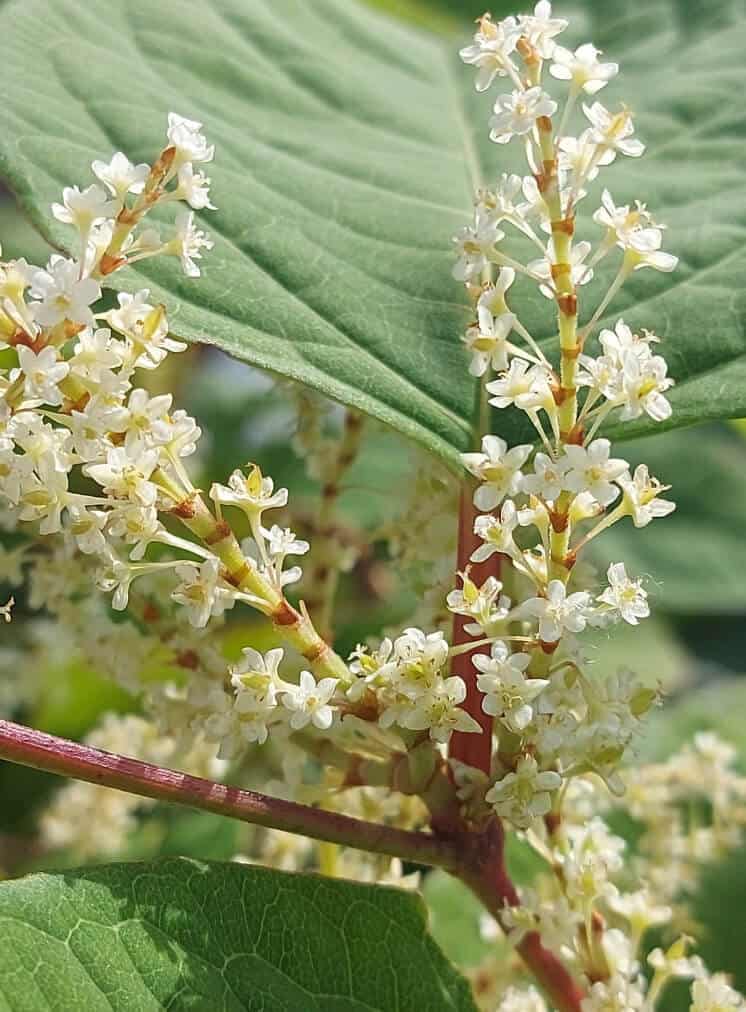
Despite its aggressive nature, Japanese knotweed can actually be quite the sight in gardens when managed in the right way.
It can be maneuvered into neat shapes, allowing it to be a beautiful addition to a garden. However, it is important to make sure that it does not join with neighbouring plants, as this can allow it to spread even further.
In addition, Japanese knotweed is often seen as a sign of neglect, which can be off-putting or embarrassing to some homeowners.
This is mainly due to the stigma associated with it, despite the fact that its bright green foliage can embellish the look of any garden or backyard.
Though Japanese knotweed can be a nightmare to deal with, it is important to recognise its beauty and potential when managed correctly.
Through diligent and timely maintenance, Japanese knotweed can be kept in check and can even be seen as an attractive aspect of the garden.
However, it is also important to remember to take all necessary precautions and call in a professional to manage it whenever necessary.
Sakura or Cherry Blossoms
Japanese name: Sakura | Latin name: Prunus spp.
Cherry blossoms have become one of the most popular Japanese trees and are also considered to be the national flower of Japan. They are known across the globe for their ornamental beauty.
The blooming of cherry blossoms is known to mark the beginning of spring. Cherry blossoms can come in colours ranging from pale ink to bright pink and even white or ivory.
There are many species of sakura, out of which the Yoshino cherry trees are the most popular variety. These trees are large and can reach heights of twenty to forty feet with canopies that can be as large as fifteen to thirty feet.
Peak bloom is usually around April 4th. This is when Hanami takes place. During the Nara period (710-794 CE), members of the Imperial court would gather below sakura trees to view and appreciate these pink and white blossoms. This is where the tradition of ‘Hanami’ originated.
Today, this tradition has become an informal festival where Japanese people gather under cherry blossom trees to enjoy picnics with family and friends.
Another tradition is ‘Yozakura’, which is when paper lanterns are hung on these trees and people enjoy their late night picnics in the romantic glow of the lanterns.
Cherry blossom petals are edible. They have found their way into commercial businesses in the form of flavours and fragrances. They can be found in teas, pickles, sweets and even in a few varieties of alcohol.
Cherry blossom fragrances are some of the most popular fragrances in the world like the Bath and Body Works Japanese Cherry Blossom Fine Fragrance Body Mist and the Yves Rocher Cherry Bloom Eau De Toilette.
Cherry blossoms are also beneficial in skincare. They are known to be full of antioxidants, have anti-inflammatory properties and also repair damaged skin.
Another recent trend are cherry blossom tattoos. Since cherry blossoms hold so much significance, they have become a popular choice for body art as well.
Japanese Maple Trees
Japanese name: Momiji | Latin name: Acer palmatum
There are many species of Japanese maple trees, the most common being Acer palmatum. They are considered to be a symbol of peace and serenity. They are often referred to as ‘kito’ which means calm, rest or peace.
The bright red foliage have been capturing the eyes and hearts for centuries. Traditionally, planting a Japanese maple tree is a way of welcoming the autumn season. ‘Momiki-gari’ is a Japanese tradition that is dedicated to visiting mountains to view wild maple trees during fall.
Most japanese people believe that this is a form of communication with nature and the spirits who live in the trees.
During fall, Japanese mountains turn bright red, yellow and orange because of the maple trees. These magnificent trees have become a popular theme in Japanese art and poetry.
Most of them talk about or depict the falling of maple leaves. Maple leaf motifs are a common sight in Japan. They are often seen on kimonos, hand fans and wall scroll paintings. They are also a common choice for tattoos as they represent elegance and peace.
The art of bonsai has gained a lot of popularity in the recent past as home decor. Japanese maple trees are one of the most common trees used because they adapt to different climates easily and have beautiful colours.
Fried maple leaves have become a delicacy in Osaka. Maple leaves are stored for a year in barrels of salt and then dipped in tempura batter and deep fried for a unique taste.
Japanese Pine Trees
Japanese Name: Akamatsu | Latin Name: Pinus densiflora
“Matsu’ is the Japanese name for pine trees. The word ‘matsu’ means ‘waiting for the soul of a god to descend from heaven’ in Japanese. There are ancient Shinto beliefs that gods ascended to heaven on pine trees.
Before the Edo period, samurai armors and katana were decorated using pine branches because pine trees were associated with masculinity. So it is no wonder that these splendid trees hold so much significance in Japanese culture.
In the Japanese culture, pine trees are supposed to be a symbol for good fortune, longevity and steadfastness. These evergreen trees are a part of the New Year tradition in Japan and represent rebirth, renewal, and a hopeful future. Pine branches are part of ‘kadomatsu’ used in New Year decorations.
Pine trees are often found on the Shinto shrine grounds. Visitors tie ‘omikuji’ or paper fortunes to their branches. These trees are believed to ward off bad luck and evil spirits and so it is a common sight to see larger shrines growing pine trees along their perimeter.
After the Great East Earthquake and Tsunami of March 2011, a forest of 70,000 pine trees was destroyed, except for a single pine tree. This tree has come to be known as a national symbol for resilience and determination.
Bamboo
Known as ‘take’ in Japan, bamboo has long been known for its sturdy root structure that is believed to hold the earth together. This is why people were asked to seek refuge in bamboo groves during earthquakes. Bamboo is a symbol of prosperity in Japan. When combined with pine and plum, known as ‘sho-chiku-bai’, it symbolizes long life, hardiness and vitality.
Bamboo has been a part of ancient tales for many centuries. One popular narrative is that of “Taketori Monogatari” also known as “Kaguya-him” or the princess Kagayu. There are many expressions that are used around Japan that are inspired by bamboo.
Expressions like “ki ni take o tsuida yo da” (like bamboo grafted onto a tree), “take ni ki tsugu” (putting bamboo and wood together), “yabuisha” (incompetent doctor quack created by combining the words “yabu” which means bamboo, and “isha” which means doctor), and “yabuhebi” (to reap ill-fortune from an unnecessary act) are common.
Bamboo is also believed to bring luck and ward off evil. Bamboo and bamboo grass are a common sight at Japanese festivals. During the Tanabata festival, people write their wishes on slips of paper and then tie them to bamboo grass. There is also a Shinto shrine that has a bamboo forest growing along its perimeter to act as a barrier against evil.
The Japanese have used bamboo in their daily life for centuries. Bamboo is used in construction, to make handicrafts and is also a big part of the Japanese cuisine.
Japanese Cedar
Japanese Name: Sugi | Latin Name: Cryptomeria japonica
Also known as ‘sugi’, Japanese cedars are the national trees of Japan. They are evergreen trees that are native exclusively to the islands of Japan. They are large trees that can grow to a height of over 100 feet and a trunk diameter of ten feet.
The wood of these trees are soft and can easily be obtained as straight logs. Hence they are commonly used in the construction of bridges, ships, lamp posts, furniture, and fences. The leaves of these cedars have a wonderful aroma and so are used in the making of incense sticks.
The most famous Japanese cedar is Yakushima’s ancient Jōmon Sugi, which is against Japanese cedar that is believed to be between 2,000 to 7,200 years old. It is now a UNESCO World Heritage Site.
What is the most popular tree in Japan?
Sakura or cherry blossoms are the most popular trees in Japan. The delicate pink or white flowers reach peak bloom around April 4th.
How many species of trees are there in Japan?
There are about 4,500 native plant species in Japan.
What is the national tree of Japan?
Japanese cedar is the national tree of Japan.
Also Read:
- Why Japanese Fruits Are Expensive
- Why Mangoes are Expensive in Japan
- Why Japanese Melons are Expensive





